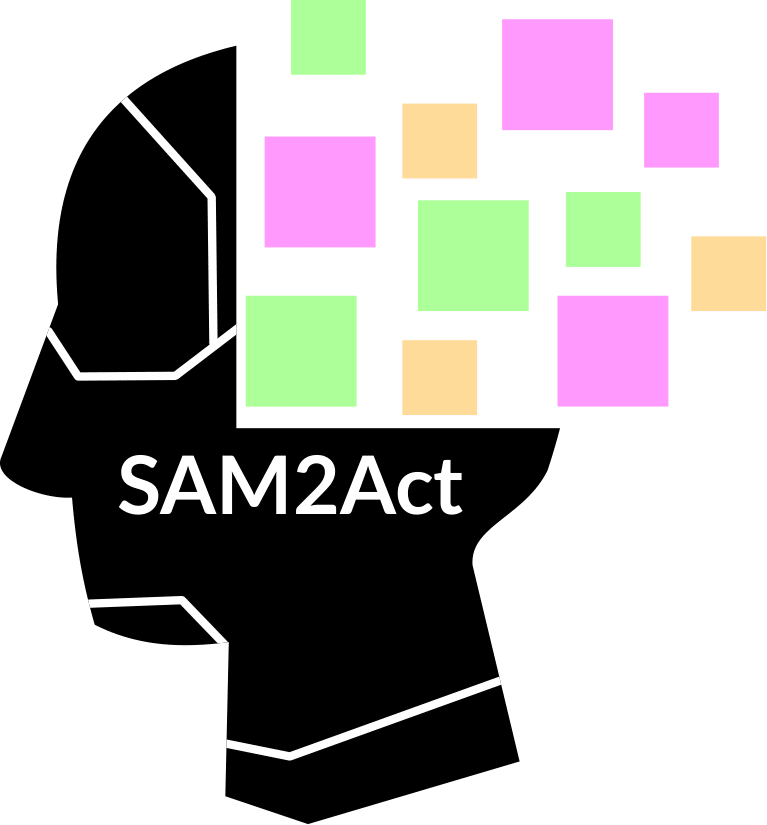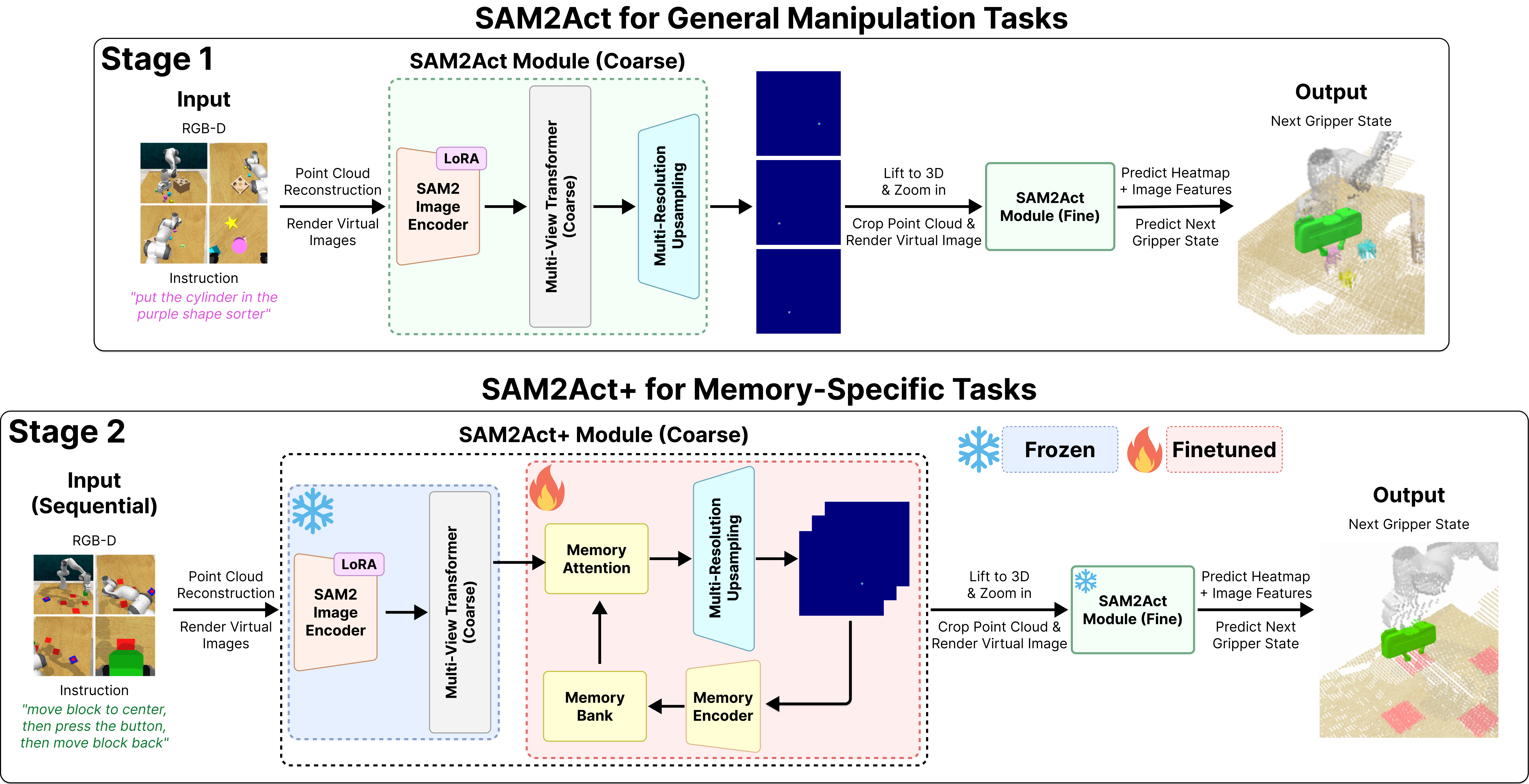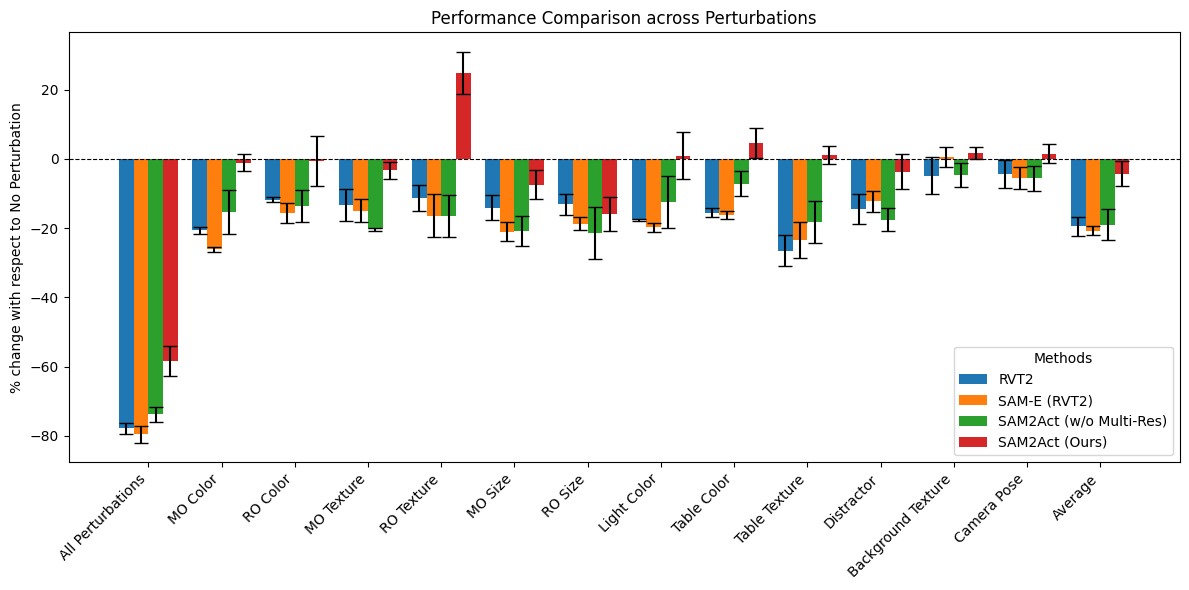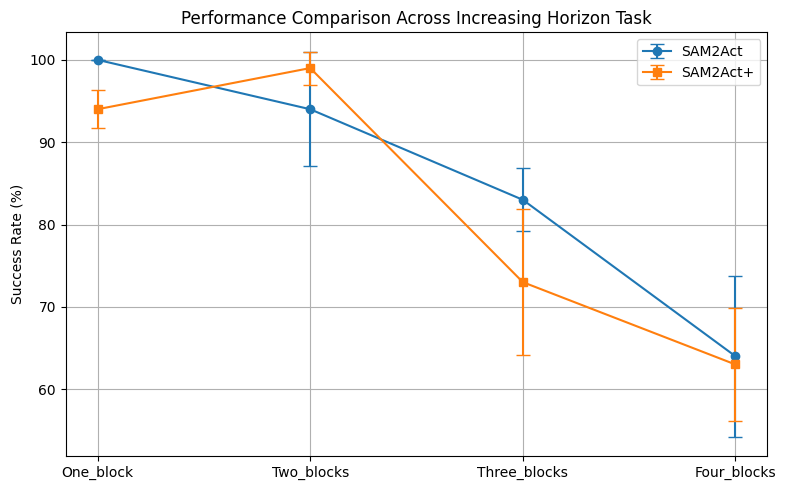 SAM2Act: Integrating Visual Foundation Models with A Memory Architecture for Robotic Manipulation
SAM2Act: Integrating Visual Foundation Models with A Memory Architecture for Robotic Manipulation
Robotic manipulation systems operating in diverse, dynamic environments must exhibit three critical abilities: multitask interaction, generalization to unseen scenarios, and spatial memory. While significant progress has been made in robotic manipulation, existing approaches often fall short in generalization to complex environmental variations and addressing memory-dependent tasks. To bridge this gap, we introduce SAM2Act, a multi-view robotic transformer-based policy that leverages multi-resolution upsampling with visual representations from large-scale foundation model. SAM2Act achieves a state-of-the-art average success rate of 86.8% across 18 tasks in the RLBench benchmark, and demonstrates robust generalization on The Colosseum benchmark, with only a 4.3% performance gap under diverse environmental perturbations. Building on this foundation, we propose \textbf{SAM2Act+}, a memory-based architecture inspired by SAM2, which incorporates a memory bank, an encoder, and an attention mechanism to enhance spatial memory. To address the need for evaluating memory-dependent tasks, we introduce MemoryBench, a novel benchmark designed to assess spatial memory and action recall in robotic manipulation. SAM2Act+ achieves competitive performance on MemoryBench, significantly outperforming existing approaches and pushing the boundaries of memory-based robotic systems.



SAM2Act outperform all other baselines, and achieve highest performance on the RLBench 18 tasks.

SAM2Act outperform all other baseline, and achieve SoTA performance on the The Colosseum.
| Models | RLBench 18 Tasks (%) |
|---|---|
| SAM2Act | 86.8 |
| ARP+ | 86.0 |
| 3D-LOTUS | 83.1 |
| 3D Diffuser Actor | 81.3 |
| ACT3D | 65.0 |
| PolarNet | 62.9 |
| Models | Average Decrease (%) |
|---|---|
| SAM2Act | -4.3 |
| 3D Diffuser Actor | -15.6 |
| MVP | -16.3 |
| R3M | -49.9 |
| ACT | -61.8 |
